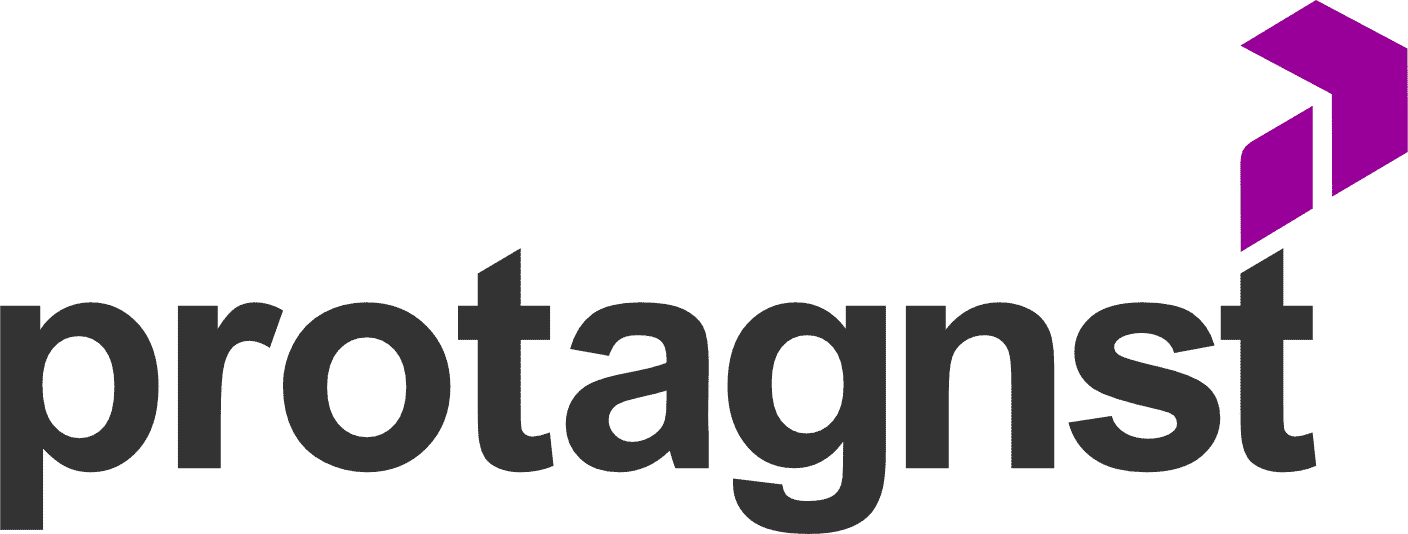In this context, a few points must be understood for the acquisition of corporate clients to be successful. With this in mind, we present throughout this article the essential elements to help you acquire more clients and, consequently, boost your company’s results. Enjoy your reading!
Mapa do Conteúdo:
ToggleKeep in Mind the Specifics of the B2B Market
Business to business (or, as it is commonly called, B2B) is a concept that refers to the commercial market established between companies, that is, organizations that conduct business and commercial operations with each other.
It’s essential to understand that the methods for acquiring large clients in this type of market are entirely different from the techniques used for the market segment whose target is individuals (or individual buyers).
In this sense, the acquisition of corporate clients depends, to a large extent, on marketing actions. In fact, the professionals who make up the marketing team have numerous responsibilities, among which the task of nurturing and capturing leads stands out until they are fully prepared for the sales team to make their approach.
For your company, therefore, one of the biggest challenges is to outperform competitors by preparing a set of content capable of “educating” your customers, encouraging them to make good choices, showing them the advantages and differences between each service and/or product.
This way, it becomes easier to generate more qualified business opportunities within your customers’ success journey.
Among the specifics of marketing for this market, we point out some of the most relevant and effective below.

Website
Your company’s website’s mission is to function as a business card for your business. It should be prepared and planned to drive contacts, clearly communicating your offers, and explaining how they solve the pain points of potential clients.
Therefore, the website should be an excellent channel for client acquisition that, through the application of relationship and acquisition strategies (evidently, considering GDPR guidelines), delivers tangible business opportunities to your sales team.
Thus, it’s highly recommended that your website have institutional content that can provide objective information and data about the services and/or products your organization offers.
Fundamentally, however, the content conveyed should be educational and rich, targeting client pain points. With this initiative, sales can be boosted more easily.
To do so, use, as appropriate, the elements present in content marketing strategies, such as ebooks, landing pages, blog articles, and others.
Holding and/or Participating in Events
Participating in B2B market events is a great opportunity to establish direct contact with your potential clients (or prospects), as well as an excellent opportunity to continue strengthening relationships with current clients.
After all, these are complex sales, typically consultative, and often depend on face-to-face contact—a strategy that remains very valid. However, before deciding to participate in a specific event, it’s necessary to define metrics, strategies, and objectives.
For this reason, it is recommended to carry out the exercise proposed below, answering the questions as honestly as possible:
- What will the Key Performance Indicators (KPIs) be?
- What are the expected returns on the investments made?
- How does your organization want to be perceived by the people present at the event?
- What experiences will your company provide?
- How will your business participate (sponsorship, booth, guest, speaker)?
- What communication strategies will you choose to attract potential clients?
- Who will be the event’s audience?
- How will this event contribute to achieving your business objectives?
- How does the event in question fit into your marketing strategy?
In addition to attending events organized by third parties, your company can also hold its own “in-house” events. One of the main differences in this alternative can be found in the fact that the guarantee of success and logistical responsibility will fall on your organization.
Some B2B businesses tend to invest in promoting events, making it one of their main marketing strategies. Check out some possibilities that, depending on the current strategy, can be applied by your business:
- Roadshows
- Seminars
- Lectures
- Master Classes
- Webinars
- Business breakfasts
- Workshops
- Congresses
- Service and product launches
The central objective of events is to position your company as an authority on certain topics. Therefore, sharing rich content—that is, content that adds value to clients’ businesses—is essential.
Social Selling
We all know that the ways people communicate and sell have changed radically in recent times, right? Consequently, we’ve noticed that so-called “social strategies” have shifted their focus to buyers’ interests, prioritizing loyalty, interaction, and, of course, conversion.
Therefore, the use of social selling as a great marketing strategy—especially for the increasingly competitive environment of the B2B market—allows you to nurture, understand, connect with, and find leads, guiding them to close sales.
Thus, social selling emerges as a contemporary way to establish much more personalized contacts with your potential clients, interacting strategically so that, as soon as it is opportune, your company can present the solution to their possible pain points and problems.
Developing best practices in social selling involves some essential steps, namely:
- Develop a strategy that ensures the production of targeted and focused content according to different channels and client pain points.
- Build relationships
- Engage
- Find the decision-makers of your potential clients
- Strengthen your brand
By following these principles in guiding your sales team, the chances of obtaining satisfactory results from social selling will certainly be quite high.
Also read about how to win more clients with the role-playing technique.
Database
By the term “database” we mean a repository structured in a certain way that allows for its consultation, updating, as well as other types of operations performed by digital means.
That is, the information inserted in a repository gathers all the data related to your potential and current clients. In the case of a database specific to the B2B market, it is important to emphasize that it can be developed with all the necessary data (such as level of decision-making power, company, position, age, name).
This allows sales communications and approaches to be carried out in the most targeted and personalized way possible. Obviously, this preparation makes actions even more effective.

Know the Main Characteristics of Your Business In-Depth
This task may seem simple at first. However, many business leaders make the mistake of promoting their services and/or products before being clear about the objectives of their respective companies—which includes scope, target audience, and other crucial elements.
The big problem with this attitude, however, is easy to understand: how would it be possible to sell something without first knowing the reasons for the prices charged, the possible problems, the benefits, and its characteristics?
As soon as the client starts asking about the service and/or product, you must be able to answer all their questions. In short, this will positively impact the client’s experience with your brand, generating credibility.
The need to study your company, define strategies and objectives, know your clients, understand your services and/or products, and, above all, be prepared to face any situation is evident.
It is very important that you are not “caught off guard.” Otherwise, you won’t convey credibility and, as a result, you will fail to take an important step towards acquiring corporate clients.
It is worth remembering that the buying experience must transcend the product and/or service delivered. It’s essential to create close ties with your audience, forging relationships between clients and your brand.
In practical terms, this can only be achieved when you know the market in which your company operates, aiming to understand the different client profiles and decision-makers.
Segment the Market
Segmentation is an effective method for separating customers into groups, according to their common interests. With this information, you can generate your B2B persona.
By “targeting” your ideal client, the company directs efforts towards people who are certainly interested in what is offered. Furthermore, by knowing where your company will operate, all strategic creation will have a greater chance of success.
However, you will also be able to identify potential problems (future or recurring), as there will be a consolidated understanding of your audience’s behavior in the market.
After all, successful segmentation can be built from factors that directly influence purchasing decisions. Surprisingly, one of the best ways is through market research.
With this, you can collect the data that will inform your decisions. There are two main types of market research:
- Primary Research: When your company collects specific information to study it
- Secondary Research: Information collected by specialized companies. The data is available, as in the surveys conducted by IBOPE
Above all, market research is not limited to observing competitors. Rather, it is about analyzing everything that happens in your segment of activity.
Through this tool, it’s possible to understand the most relevant challenges in your area, identifying opportunities and problems, knowing client profiles, understanding competitor strategies, analyzing suppliers, and understanding—demographically—the area of activity in which your business operates.
Similarly, all research starts with a certain question or problem. Defining the problem in research implies having an appropriate starting point to begin studies.
If your goal is to design strategies that lead your company to become a benchmark in its segment, it is essential to know exactly where you stand in the market.
Similarly, it’s necessary to describe your business situation clearly, including information about competition, communication, distribution, the market, and other factors.
Secondary information is collected from testimonials from clients who have already made purchases, reviews by digital influencers, evaluations by experts in your area, and articles from blogs, magazines, or newspapers.
Once this information is obtained, and your market position is understood, it remains to define where you want to go. At this point, you will know which data—among those obtained in the research—will be used to create marketing strategies and actions for client acquisition.
Previously, remember that it is not uncommon, when observing research results, for the defined problems not to represent the real bottlenecks of your business model. It is also common for all results to lead to the same decision.
In fact, every well-structured business conducts constant market research. Similarly, your organization should be prepared to the point of being able to predict actions and anticipate bad times that may appear on the horizon.

Define Your Company’s Buyer Persona
The buyer persona, which in this case can be called the “B2B persona,” is the representation, made through a created character, of your ideal client, that is, the buyer.
To identify your B2B persona, you need to conduct research, data collection, and interviews with your prospects and clients, as B2B personas cannot be created based on assumptions, guesses, or “hunches.”
It is essential to be assertive to obtain quality results. Starting from the definition of your B2B persona, it’s possible to know how to act in the acquisition of corporate clients, as your company can begin planning, setting objectives and goals in a way that demonstrably brings positive returns to the business.
Every B2B persona must face certain functional challenges (such as solving specific problems or completing certain tasks) that have social components (demonstrating status or looking good) and emotional/personal components (seeking security, peace, comfort, among others).
By evaluating purchases from the B2B persona’s point of view, you will understand how these actions should be carried out and how the solution you offer can help them in this process.
Don’t forget that, for your B2B persona, there are tasks that are considered more relevant than others. It’s also important to assess the context in which such activities will take place.
In other words, your B2B persona has pain points that must be addressed. The concept of “pain,” in this sense, describes all the elements that bother your B2B persona after, during, or before trying to solve their tasks.
Thus, they can arise from unexpected results (problems such as products that don’t work), obstacles (situations that make it impossible to complete tasks), or risks (threats and suspicions that certain problems may occur).
Above all, your B2B persona expects to obtain gains from acquiring a new solution. That is, they expect some result that may be necessary for their tasks or that would make their lives easier. It is therefore advisable not to neglect other aspects, such as the desire for social gains linked to status, power, and career.
Need help acquiring B2B clients? Fill out this form to contact Protagnst.
Collecting Information to Identify Your B2B Persona
There are different tactics used in collecting data about clients. For example, conducting desk research is a quick method, through the analysis of external sources of information available on the internet, such as social media discussion groups, LinkedIn profiles, professional institutions, industry magazines, and professional association websites.
The history of your marketing associations can also be a powerful indicator of the solutions, times, and topics preferred by your audience. Certainly, public information from various research and sources (such as government sources), such as published articles or data provided by the IBGE, can be used.
This information is useful for developing your starting point. However, it should be complemented by market research that will be developed for your business to better understand customers.
At this point, it is recommended to use methods that enable qualitative analysis, such as Design Thinking meetings, focus groups, or interviews. The latter, by the way, are essential for uncovering purchasing processes, including patterns of acquisition and content consumption (how and where customers consume content and what their preferences are).
This allows for a better understanding of the professionals directly involved in the purchasing processes, in order to identify the “trigger event” and the problems that the target company is trying to solve.
Another possibility is to study your portfolio of current clients, aiming to detect patterns—although you shouldn’t limit yourself to this. Establish your B2B persona and seek to interview potential clients.
Since they routinely deal with other suppliers, it is quite likely that they will be less influenced by your brand, and can contribute valuable insights.
It is also possible to obtain relevant data from your own sales team. Your employees receive constant feedback from the market and know the competition up close, in addition to being in permanent contact with your target audience.
In short, you must establish the management of this information at each point of contact, through a well-structured intelligence process. This process must be dialectical, encompassing the collection of information, planning, analysis, evaluation, and measurement of results.
Outline Your Strategies
After studying your business, knowing your B2B persona, and knowing who to address your communications to, it’s time to start outlining your strategies. This is the time to see what competitors are doing and also to invest in innovations that will help you improve your market positioning.
At this stage, start using one of the growing trends that is reinventing itself by focusing more and more on users: the internet. According to a recently published study, more than 80% of Brazilians use the internet daily.
Given this scenario, failing to invest in online environments means giving up the possibility of reaching a huge number of people (and all at once). This is because the internet can break down borders, allowing your company to reach its intended audience in a specific and, at the same time, comprehensive way.
Start dialogues with your potential clients to carry out effective acquisition planning. Negotiations between companies are never as fast as end-consumer purchasing decisions. This is a dynamic that can last for months or years.
For this reason, it is often necessary to have negotiation skills and a great deal of patience. The first phase can be understood as the identification of the sector that will use the services and/or products offered. Your sales team should interact precisely with the individuals in this area.
In practical terms, dialogue is crucial. To this end, salespeople should always be well-informed about the market, knowing their own business in depth. However, this knowledge cannot be dumped all at once.
Indeed, dialogues work as two-way streets: salespeople should listen to their prospects, understanding their needs and weaknesses and, based on this, exchange information, talking about the offer, seeking to contribute to the solution and offering value before making any kind of charge.
The professional needs to demonstrate that they know, as a specialist in the subject, what to do to help the potential client. Acquiring large clients is full of challenges, however, once these are overcome, the process becomes very important for your company’s sales department.
Undeniably, it’s necessary to understand the timing and needs of each client. This aspect is so important that it deserves to be reinforced. Understanding timing and needs is extremely important, as the establishment of lasting customer relationships depends on these skills.
In order to understand these aspects, a close relationship between the potential client and the brand is highly relevant: it will be useless for a client to sign a contract and then cancel it immediately due to a lack of adherence elements. Therefore, to prevent rework and wasted time, it is necessary to have a well-trained team.
Perhaps the company with which your employee is negotiating has a high need for your services and/or products but does not have the necessary funds to acquire them at the moment. In this case, it’s worth registering this contact, maintaining a close relationship with them.
Remember that there is a person on the other side of the email or the phone line. They may contact your company again, especially if they have real interest and have been treated appropriately.
Prospecting activities, in turn, cannot stop. For B2B client acquisition, the pipeline must be fed regularly so that there is no shortage of deals to be closed.
A good alternative to avoid overloading your team—and, at the same time, keep the search for new markets at high levels—is to implement a team exclusively dedicated to acquisition.
Depending on the segment of activity and the general characteristics of the business, certain companies can also rely on professionals specialized in studying the products that the company makes available, in order to create new products and varieties of use for the market.

Consider Social Media in Your Planning
The use of social media represents one of the most widely used strategies by business leaders seeking to know how to use the internet for B2B client acquisition.
Social networks provide several platforms that enable your business to achieve good results, such as Twitter, LinkedIn, Facebook, YouTube, Instagram, among others.
First of all, they can be excellent allies, especially when it comes to acquiring clients for your business, since there is strong user interactivity on them.
For this reason, taking advantage of this exchange of information, aiming to maintain more direct communication with your clients, is a great way to acquire corporate clients.
In addition, you can also use them to promote your products and/or services and analyze the habits of your prospects, maintaining closer contact with your current clients.
It’s recommended to study and identify which social networks your B2B persona prefers. This measure will prevent your company from wasting time and money investing in a platform where your clients won’t see your brand.
Then, identify the language used by your B2B persona so that your business can have a more open dialogue. In the B2B market, if your prospects are, for example, engineers, it’s best to use more informative, technical, and formal language.
Be that as it may, the most important thing is that your company is where your audience is, adapting its tone and language according to the platform, in order to ensure effective communication with users.
If you want help acquiring B2B clients, fill out the form below and together we will create the best strategy for your business.




